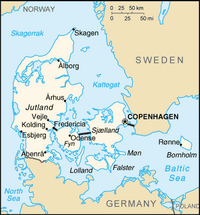Legendary origins of Jats


An old Norse poem about Jaets (Jats)
- "I remember Jaets
born in the dawn of time,
those who once
nourished me;
nine worlds I remember
nine Jaet women,
and the widely known tree of destiny,
hidden under the ground."
(Elder Edda)[1]
Jats – Heroes of Mahabharata
M. K. Kudryavtsev, a Soviet Indologist and ethnographer who is regarded as one of the "fathers" of Indian Ethnography in Russia along with D. A. Suleykin and V. E. Krasnodembskiy,[2] researched the origin of the Jats and pointed out that some legends speak of the Jats as having lived in Sind long before the Scythians invaded India and even of a direct association of Jat chiefs with the heroes of the Mahabharata.[3]
David L. Haberman (Professor of Religious Studies at Indiana University, Bloomington, USA) also notes that the Jats "consider themselves to be the descendants of Krishna's own clan, the Yadavas." He further writes, "Soon after the death of Jai Singh in 1743, Suraj Mal was recognized by Mughal authorities as the legitimate protector of the land of Krishna."[4]
See also
- Edda
- Slavic Vedas
- Indo-Aryan origin of Jats
- Indo-Scythian origin of Jats
- Jat History in Russian and Ukrainian language books
References
- ↑ Who were the Jaets? — DALUM HJALLESE DEBATKLUB
- ↑ http://india.spbu.ru/Indology-centers-en.html – Saint Petersburg State University, Saint Petersburg, Russia
- ↑ Kudryavtsev, Mikhail Konstantinovich (1964). On the Role of Jats in Northern India's Ethnic History.
- ↑ Haberman, David (2020). Loving Stones: Making the Impossible Possible in the Worship of Mount Govardhan. Oxford University Press. ISBN 0190086718, 978-0190086718.
Further reading
- The Jaets were older than the Aesirs
- The designation Aesirs has Indo-European origin
- A brief history of Denmark
- The Scandinavian Bronze Age was an aristocratic period
- The history of Danes, Heruls and Angles based on ancient writers
- The early Viking period was a troubled and violent time
Books
- Piiroinen, Pia (2018). Me Habirut Mahabharata (Part 1). Books on Demand. ISBN 952805157X, 978-9528051572. — Full text of the book is available online for readers, at Google Books
Back to History

